Explore the three main ways we interact with our environment—adaptation, modification, and dependence. Learn how these interactions impact our world daily.
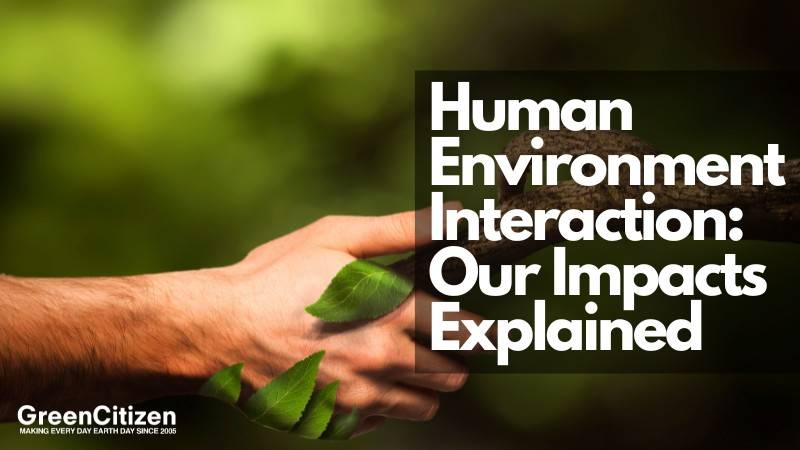
Whenever you check the news about reports on environmental problems these days, it almost always focuses on climate change.
Not that I don’t believe this is an area where human activities are causing lasting damage, but I think that there are other areas of human-environment interactions that deserve the same amount of attention.
So, I recently spent some time with friends to see if they fully understood how much our daily activities as humans have an impact on our environment.
Quite surprisingly, most of them didn’t fully appreciate the scale of the problem, and it’s critical for all of us to fully understand how human-environmental interactions are causing devastating damage.
In many cases, it’s completely unintentional and an indirect impact of human activities.
So I decided to share my research with readers.
What Is Human Environment Interaction?
A straightforward definition of human-environment interaction might be the range of human activities that directly influence the environment.
This interaction doesn't inherently imply negative consequences. Indeed, our survival hinges on the environment; fascinatingly, as I will demonstrate, there are several positive ways our interactions can benefit our natural surroundings.
However, it is a sobering reality that the negative impacts of human activities on the environment currently overshadow the positive ones. This imbalance underscores the urgency of addressing environmental issues.
Now, let us delve into two pivotal areas where most human-environment interactions occur. These domains, which I will explore further, are crucial in understanding both the challenges and opportunities we face in fostering a sustainable relationship with our planet.
1. The Human Social Systems
Human environmental interaction is a pervasive phenomenon, occurring wherever human social systems meet the natural world. This intersection is profound in modern society, as it manifests in virtually everything we do and use.
The extent of a human social system's impact on nature hinges on several crucial factors:
Consider the stark differences between a hunter-gatherer tribe in Africa and the urban sprawl of New York City to appreciate the spectrum of these interactions.
2. The Environment And Ecosystems
Having recognized the pivotal role of human social systems, we then turn to their interactions with the environment.
Humans engage with ecosystems primarily to derive various ecosystem services — benefits that these natural systems provide, such as clean water, pollination of crops, and climate regulation. However, in many Western societies, this relationship has unfortunately evolved into a predominantly one-sided, exploitative dynamic.
Our society has reached a point where it extensively exploits environmental resources for economic and agricultural gains, often with scant consideration for the environment's ability to regenerate and sustain itself. This trend highlights a pressing need for a more balanced and sustainable approach to our interaction with the natural world.
What Are The 3 Types Of Human Environment Interaction?
Exploring the intricate connection between humans and the environment reveals some profound insights. I find this perspective particularly enlightening as it vividly illustrates the extent of our impact on the world around us.
1. Dependence On The Environment
Every living creature on Earth relies intrinsically on its natural environment for survival. This dependency, essential for necessities like air, water, food, or shelter, is a fundamental aspect of life.
However, for humans, this reliance has expanded dramatically in the context of our globalized world. For instance, consider someone residing in Boston. Their daily life might unwittingly depend on agricultural products from Central America or on minerals extracted in China for electronic devices.
In essence, almost everything within our immediate surroundings is intricately linked to natural resources, often sourced from far-flung corners of the globe. This global tapestry of dependence not only highlights our interconnectedness but also underscores the vast reach of our environmental footprint.
2. Modification Of The Environment
Human activities inevitably lead to changes in our environment, yielding both adverse and beneficial effects.
On one hand, we witness the positive strides made through ecologically sustainable farming and the implementation of renewable energy projects. These initiatives, though progressive, still depend on natural resources, illustrating a delicate balance in our interaction with the environment.
On the other hand, our increasing use of land to construct homes, shopping centers, and schools signifies a more concerning aspect of environmental modification. In colder climates, the burning of coal, wood, and oil – resources extracted from our environment – is a testament to our profound impact on the natural world.
Reflecting on this duality can be both intriguing and alarming. Consider, for a moment, the everyday items that surround you – your phone, vehicle, home. Each is a product of this intricate relationship with the environment, highlighting both our ingenuity and the urgency to maintain ecological harmony.
3. Adaptation To The Environment
One of the most fascinating aspects of human existence is our ability to inhabit some of the most extreme environments on the planet, a testament to our evolutionary success.
The principle is clear: the greater a species' capacity to adapt to environmental changes, the higher its chances of survival. This adaptability is vividly illustrated in the diverse habitats humans call home.
Take, for instance, communities thriving above the Arctic Circle, where extreme cold and prolonged darkness dominate. Contrast this with those living in dense jungles, where humidity and biodiversity present entirely different challenges. Or consider the resilience of people in arid savannahs, where water scarcity and heat dictate a unique way of life.
Each of these examples underscores the remarkable extent to which humans have adjusted to the wide array of conditions presented by our natural environment. It's a powerful reminder of our species' ability not just to survive, but to thrive under a range of circumstances, molding our lifestyles to the rhythms and demands of our surroundings.
Examples Of Human Environment Interaction
There are too many individual human interactions with the environment to list them all. But I wanted to give some example interactions for people to get a picture of all the negative effects.
Negative Human Environment Interaction
Depicting the negative aspects of human-environment interaction is unfortunately quite straightforward, particularly when we examine actions as devastating as these:
1. Deforestation (Dependence, Modification)
In my view, deforestation stands as one of the most alarming human-environment interactions today. Annually, our planet witnesses the loss of millions of acres of forests, cleared to accommodate expanding agricultural demands.
However, the issue extends beyond just the loss of CO2 processing capabilities. Vital habitats for some of the world's rarest species are vanishing, a critical concern for biodiversity. Furthermore, this loss has cascading effects on human populations too. It influences not only the types of food we can cultivate but also the locations where agriculture is viable. This, in turn, exerts pressure on our global food supply, impacting both economic stability and agricultural productivity.
Such significant deforestation also contributes to broader environmental issues like climate change, exacerbating extreme weather patterns and affecting the lives of indigenous communities reliant on these forests. As we witness these forests diminishing, we're not just losing trees but a complex web of life that sustains both ecological balance and human existence.
2. Water Usage (Dependence)
Water, undoubtedly one of the most vital natural resources, is often undervalued, particularly in Western countries.
Consider this everyday scenario: you turn on your faucet, and out flows clean, potable water. This seemingly simple act is the endpoint of a complex journey, involving the extraction of water from rivers, lakes, and underground aquifers. Yet, this precious resource is so easily taken for granted.
To grasp the impact of our water usage, one need only look at the drought situations in places like California. Here, the demands of large population centers have significantly strained the availability of freshwater, offering a stark illustration of this critical human-environmental interaction. These drought conditions not only affect water supply but also have far-reaching consequences for agriculture, wildlife, and the overall ecological balance.
Contrast this with regions where access to clean water is a daily struggle, and the disparity in water appreciation becomes even more apparent. This global perspective on water usage highlights the urgent need for sustainable water management practices, ensuring that this indispensable resource is preserved for future generations.
3. Energy And Natural Resources (Dependence, Modification)
The discovery of fire marked a pivotal moment in early human evolution, fundamentally transforming our relationship with nature. Today, our reliance on energy, particularly for heating, remains a prime example of how we harness natural resources.
Yet, our energy needs have vastly expanded beyond heat. Modern society depends heavily on energy for transportation and communication systems. This expansion is a key factor in the dramatic surge of carbon emissions over the last century. Our unbridled energy consumption has become a dominant form of human-environmental interaction, primarily driven by our reliance on two types of fossil fuels: coal and oil.
These fuels, while being energy-rich, have significant environmental costs. Their extraction and use release a substantial amount of greenhouse gases, contributing to global warming and climate change. Additionally, the process of obtaining these resources often leads to habitat destruction and pollution.
This scenario underscores the urgent need to transition towards more sustainable energy sources. By understanding and addressing our intense energy demands, we can mitigate the environmental impacts and move towards a more balanced interaction with our natural world.
4. Oil And Gas (Dependence, Modification)
Out of all the resources extracted from our planet, oil and gas stand out as the most environmentally disruptive.
The production and transportation of these fuels are fraught with ecological challenges, including significant water pollution and widespread habitat destruction. Beyond these issues, the burning of oil and gas is a principal driver of the current climate crisis, contributing heavily to global warming and extreme weather events.
Every stage of the oil and gas production process inflicts environmental damage, extending beyond the already critical issue of climate change. The impacts range from air and water pollution to the disruption of ecosystems and communities.
Understanding and managing this critical human-environmental interaction is imperative. As we confront these challenges, exploring and investing in alternative, more sustainable energy sources becomes not just an option but a necessity for ecological balance and a healthier planet. This shift is essential to mitigate the extensive environmental harm currently being caused by our dependence on oil and gas.
5. Natural Mineral Resources (Dependence, Modification)
The array of natural resources that humans extract is vast, encompassing materials from timber and coal to oil, gold, and rare earth metals.
Commonly, the image that comes to mind when thinking of mining is deep shafts burrowed into the earth. However, many mineral extraction techniques, including strip mining, are far more invasive, stripping away millions of acres of land to access these resources. This process constitutes a devastating form of human-environmental interaction.
The method of strip mining, in particular, often leads to severe and sometimes irreparable environmental damage. As these practices unfold, toxic materials are frequently released into the surrounding ecosystems, where they cause lasting harm and are virtually impossible to fully remove.
Moreover, the burgeoning industrialization in developing countries is fueling an increased demand for these extraction methods. This growing demand heightens the urgency to consider and develop more sustainable and less destructive mining techniques. Such innovations are crucial not only for reducing environmental harm but also for fostering a more sustainable and responsible approach to resource utilization globally.
6. Waste Production (Modification)
For me, the issue of plastic waste represents one of the most heart-wrenching forms of human-environmental interaction. Witnessing animals suffer due to the plastic littering our oceans and landscapes can be overwhelmingly distressing.
Despite significant advancements in recycling efforts, this remains a domain where our daily actions have far-reaching and harmful consequences, often extending hundreds of miles from their origin. This situation is exacerbated by a seeming emotional disconnect; once our trash is out of sight, collected by trucks, it often becomes out of mind as well.
This disconnect highlights a crucial need for not just improved waste management, but also for reducing plastic usage at the source. Addressing this crisis requires a multifaceted approach, including enhancing recycling technologies, advocating for biodegradable alternatives, and fostering greater public awareness about the enduring impact of our consumption habits. It is through these concerted efforts that we can hope to mitigate the cruel impact of plastic waste on our environment and its inhabitants.
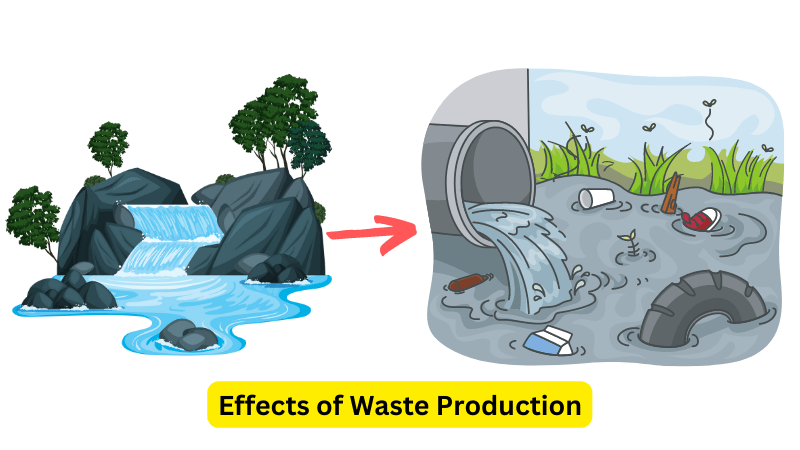
7. Airborne Pollution (Modification)
When discussing air pollution, the focus often narrows to carbon dioxide (CO2). However, the reality is more complex, involving various pollutants from factories, vehicles, and even households.
In many Western countries, regulations have been implemented to ban certain harmful toxins. Factories and vehicles are now equipped with filters designed to capture these pollutants. Yet, these measures are not entirely foolproof. Despite these filters, some toxins inevitably find their way into the air, contributing to ongoing environmental challenges.
Furthermore, while the use of chlorofluorocarbons (CFCs) was banned decades ago due to their ozone-depleting effects, other pollutants such as volatile organic compounds (VOCs) still persist. VOCs, found in many aerosols, paints, and solvents, are not just a concern for the environment but also pose a direct threat to human health, particularly our respiratory systems.
This situation underscores the intricate and often overlooked aspects of human-environment interaction. It highlights the need for continued vigilance and innovation in reducing air pollution and protecting both our planet and our health.
8. Ocean, Lake, And River Traffic (Adaptation, Modification)
The bustling traffic on our planet's waterways has reached unprecedented levels, with significant human-environmental impacts that are particularly detrimental to marine life.
For instance, numerous large fish and marine mammals face the threat of collisions with boats, an issue that has grown alongside increased maritime activity. Additionally, the noise from engines and propellers can cause severe disorientation and distress to these creatures, disrupting their natural behaviors and habitats.
Moreover, the ever-present risk of water pollution from this traffic poses a grave threat, causing irreversible harm not only to marine ecosystems but also affecting communities worldwide that rely on these waters for their daily needs.
To address these pressing concerns, it's crucial to involve marine biologists in the regulation of maritime traffic. Their expertise could be instrumental in developing strategies that minimize disruptions to marine life, ensuring that shipping and boating practices are conducted in an environmentally responsible manner. This collaborative approach is a vital step towards mitigating the adverse effects of waterway traffic on our precious marine environments.
9. Tourism (Adaptation, Modification)
The environmental footprint of tourism presents several critical issues, notably the significant carbon emissions associated with air travel. As flying has become the predominant mode of reaching vacation destinations, the carbon cost of these journeys has escalated dramatically.
Furthermore, the impact on the destinations themselves is profound. Many resorts encroach upon natural habitats, often in areas ill-equipped to handle the influx of thousands of tourists. This type of human-environment interaction forces these delicate ecosystems to bear a burden they are not designed to handle.
As a result, the environmental impact can be devastating, sometimes causing irreversible damage. It underscores the urgent need for sustainable tourism practices, including eco-friendly travel options and responsible management of tourist destinations. Such measures are essential to mitigate the adverse effects on our natural environments and ensure that the beauty and integrity of these places are preserved for future generations.
10. Urban Expansion (Adaptation, Modification)
The escalation of land use in and around the world’s largest cities is significantly reducing the available space for plants and animals, a trend that raises considerable environmental concerns.
Concurrently, with the expansion of these urban areas comes a host of related issues. Pollution levels are on the rise, and the strain on available water resources is intensifying. These challenges highlight the complex relationship between urban growth and environmental sustainability.
Despite these issues, there are positive developments to note. Some cities globally are proactively addressing human-environment interaction by implementing smart urban planning strategies. These initiatives aim to integrate natural elements into urban spaces, creating a more harmonious balance between city life and the environment. However, such efforts are currently not widespread enough to counteract the broader impacts of urbanization. There is a pressing need for these sustainable practices to be adopted on a much larger scale, ensuring that cities can grow in harmony with their natural surroundings, rather than at their expense.
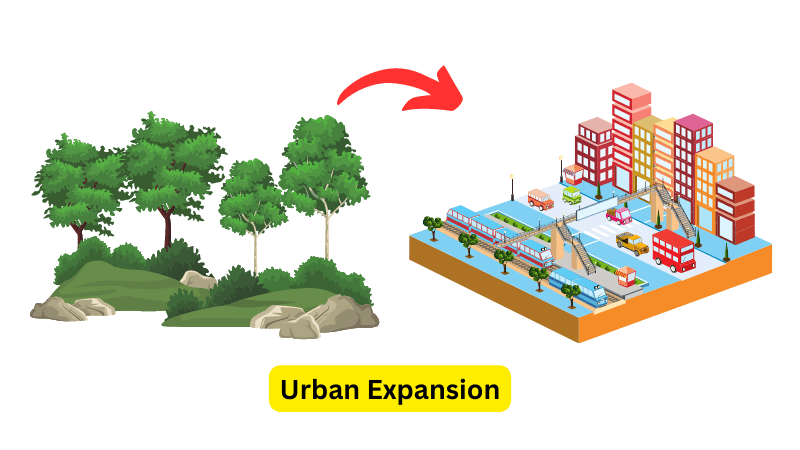
Positive Human Environment Interaction
Exploring the positive aspects of human-environment interaction was a particularly rewarding part of my research. It's enlightening to see how we, as individuals and communities, can not only reduce harm but also actively contribute to environmental well-being.
1. Renewable Energy (Dependence)
The industries of solar, wind, and geothermal energy are experiencing rapid growth, reflecting a significant shift in how individuals approach energy consumption both at home and in their transportation choices.
However, to truly see renewable energy usage surpass the reliance on traditional fossil fuels, accelerated action is required. Transitioning to renewable energy sources is not just about reducing harm; it's about actively fostering a sustainable and positive interaction with our environment.
One of the most straightforward and impactful actions individuals can take is switching their home electricity to a provider that sources renewable energy. This simple change can contribute significantly to reducing carbon emissions and promoting environmental health. By embracing renewable energy in our daily lives, we not only support these burgeoning industries but also play a crucial role in the collective effort to protect and nurture our planet.
2. Urban Green Projects (Adaptation)
Urban planners globally are increasingly advocating for a greener approach to city living, a shift that is both necessary and welcome.
This initiative extends beyond just adding public parks. Wastelands and rooftops are being transformed into vibrant urban gardens, repurposing underutilized spaces into green havens. Such transformations are not only about beautifying the city but also about fostering community engagement. These urban gardens provide a platform where communities and neighborhoods can unite, collaborating on group schemes to plant flowers, fruits, and vegetables, thereby nurturing a positive human-environment interaction.
Additionally, the creation of green roof spaces in cities is gaining momentum. These green roofs are not just aesthetically pleasing; they play a crucial role in attracting more wildlife and enhancing biodiversity in urban areas. They also serve an educational purpose, making city dwellers more cognizant of their impact on the environment. Through initiatives like these, cities are not only becoming greener but are also promoting a more environmentally conscious and connected urban community.
3. Eco-Tourism (Adaptation)
Eco-tourism represents one of the most rapidly expanding niches in the travel industry, offering much more than the simple purchase of carbon credits to offset air travel.
In this innovative approach to tourism, several countries are now presenting opportunities for tourists to actively lessen their environmental footprint. This involves engaging in activities like contributing to preservation efforts and participating in reforestation projects. Such initiatives enable travelers not only to experience and appreciate exotic natural ecosystems but also to play a hands-on role in their conservation and enhancement.
This form of tourism isn't just about seeing the world; it's about making a positive impact on it. By choosing eco-tourism, travelers contribute to the sustainability and growth of the natural environments they visit, thus fostering a mutually beneficial relationship between tourism and environmental preservation. This approach exemplifies a responsible and sustainable way of exploring our planet, one that aligns with the urgent need to protect and nurture our natural world.
4. Protection Of National Parks (Adaptation)
The United States boasts an impressive network of vast national parks, effectively managed and protected by various government agencies. This system serves as a model of successful environmental stewardship.
However, the situation in other parts of the world can be markedly different. In many countries, national parks face significant challenges, often due to limited resources and differing priorities. This disparity highlights a crucial issue in global environmental conservation.
In this context, I believe that wealthy, industrialized countries have a responsibility to extend their support and expertise to help preserve these natural treasures in developing nations. Such international collaboration could be instrumental in establishing and maintaining a robust conservation framework, similar to what has been achieved in the United States. By sharing resources, knowledge, and best practices, these countries can significantly contribute to building a more cohesive and effective global approach to protecting our planet's precious national parks. This effort is not just beneficial for the environment but also crucial in weaving sustainable practices into the social systems of diverse nations.
5. Waste Reuse And Recycling (Modification)
The issue of waste management is becoming increasingly pressing, as landfill sites around the world struggle to accommodate the ever-growing volume of waste. In addressing this challenge, it's instructive to look at countries like Sweden, which have pioneered effective strategies in this field.
With a robust support network aimed at maximizing reuse and simplifying recycling processes, Sweden has demonstrated that it's entirely feasible to significantly reduce the amount of waste that ends up in landfills. This approach not only alleviates the pressure on landfill sites but also promotes a more sustainable cycle of resource utilization.
Furthermore, Sweden has been a leader in transforming non-recyclable waste into energy. This innovative process is executed in a way that minimizes toxic and greenhouse gas emissions, setting a benchmark in waste-to-energy technology. Such advancements offer valuable lessons for other nations grappling with waste management issues, highlighting that with the right systems and commitment, it's possible to turn waste into a resource rather than a burden. This shift towards more efficient and environmentally friendly waste management practices is a crucial step in our journey towards sustainability.
6. Composting (Adaptation)
Composting is a topic I'm particularly passionate about, given my love for gardening. It's a simple yet impactful way to address a significant environmental issue.
With approximately 30% of all food waste ending up in landfills, it's clear that more effective home-based solutions are needed. Composting offers a practical and accessible method for dealing with this waste. Whether you live in an apartment or have a spacious backyard, there are composting options available for everyone.
Indoor composters, for instance, are designed to be odorless, making them perfectly suitable for apartment living. These compact systems allow anyone to contribute to waste reduction, regardless of their living situation. Meanwhile, for those with outdoor space, setting up a compost bin is a straightforward and highly beneficial practice. Not only does it help reduce the amount of waste sent to landfills, but it also creates nutrient-rich soil that can be used to enrich gardens, thereby completing a natural cycle of growth and sustainability.
Embracing composting, whether indoors or outdoors, is a step towards reducing our environmental footprint. It's a testament to how small, individual actions can collectively make a significant difference in our approach to waste management and environmental stewardship.
7. Water Management (Adaptation)
Water management is a critical aspect of environmental stewardship, given our fundamental reliance on water for survival. By adopting better water management practices and embracing systems like rainwater harvesting, we can significantly reduce our dependence on natural water supplies.
Implementing rainwater harvesting can be surprisingly simple and effective, even on a small scale. Collecting rainwater for gardening purposes is an excellent starting point. This not only conserves water but also promotes a more sustainable approach to resource utilization in our daily lives.
Moreover, with a modest investment, rainwater can also be utilized for additional household purposes, such as flushing toilets. Such integration of rainwater into our regular water usage not only diminishes the strain on municipal water systems but also serves as a practical example of how individual actions can contribute to broader water conservation efforts.
By embracing these water management techniques, we not only safeguard this vital resource but also set a precedent for responsible and sustainable living. This approach reflects a deeper understanding of our interaction with the environment and underscores the importance of adapting our lifestyles to preserve our planet's natural resources.
Conclusion
People need to wake up to the fact that most human-environmental interactions, in some way, negatively impact the environment.
As a human race, we need to change how we use and abuse the natural resources that we rely on so much.
Some of the changes will have to come through new legal policies and approaches to the use of natural resources. But I believe that we can do a lot more by starting in our homes and communities.
And when people fully understand the different types of human-environmental interactions and make positive changes by following our examples, then we’ll be in a much better place to save the planet.

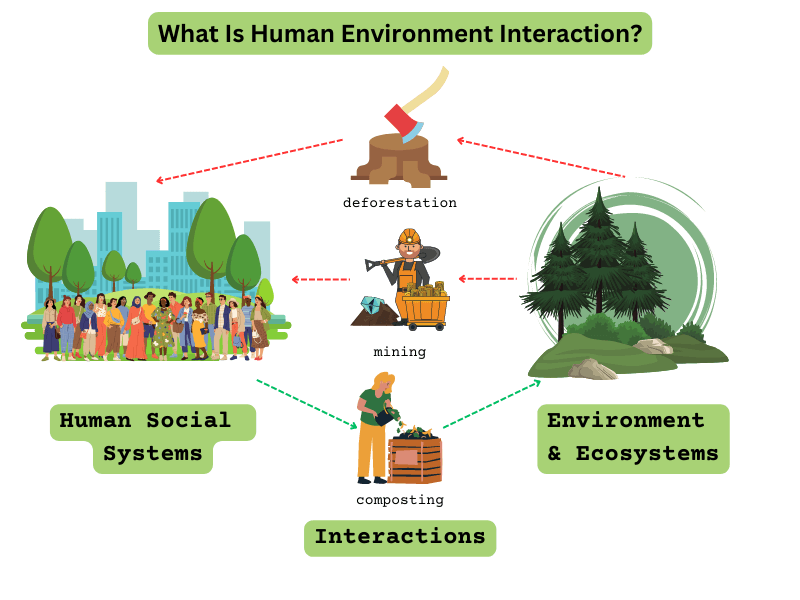
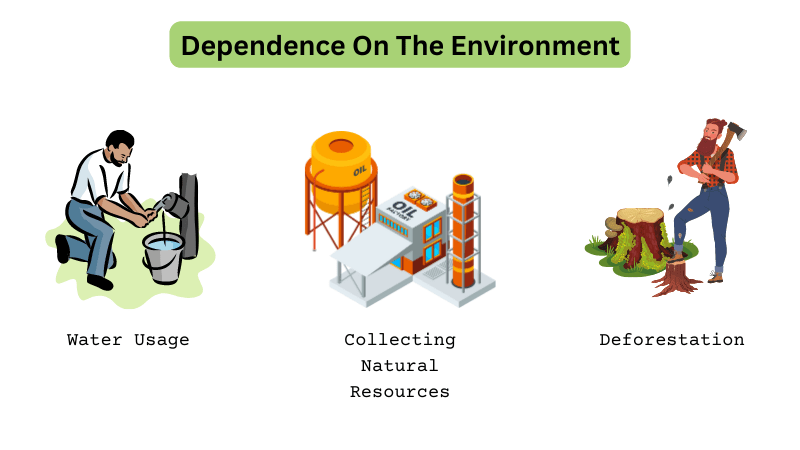
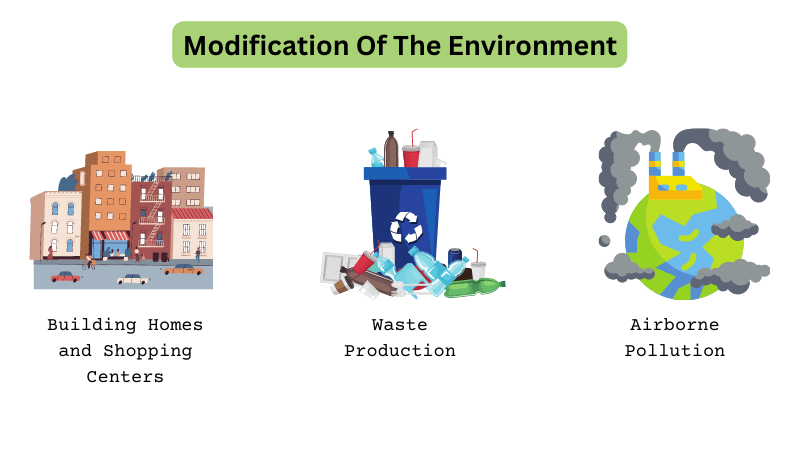
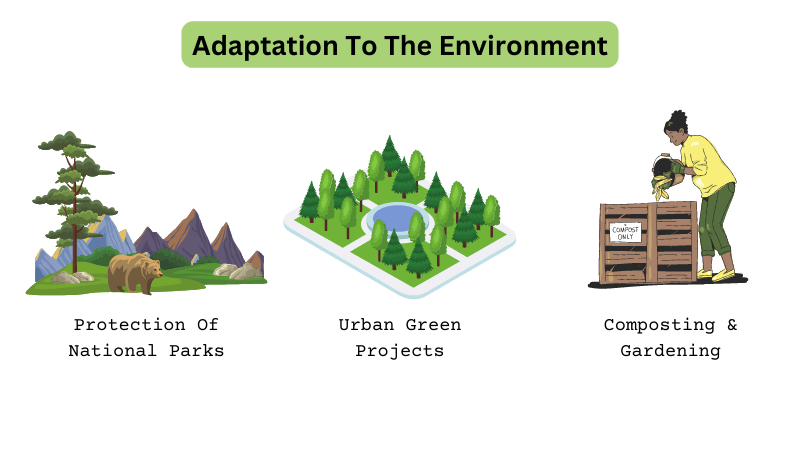
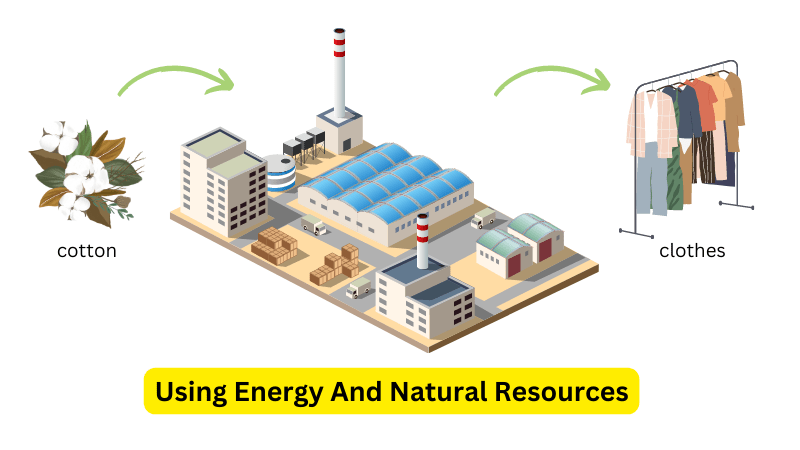
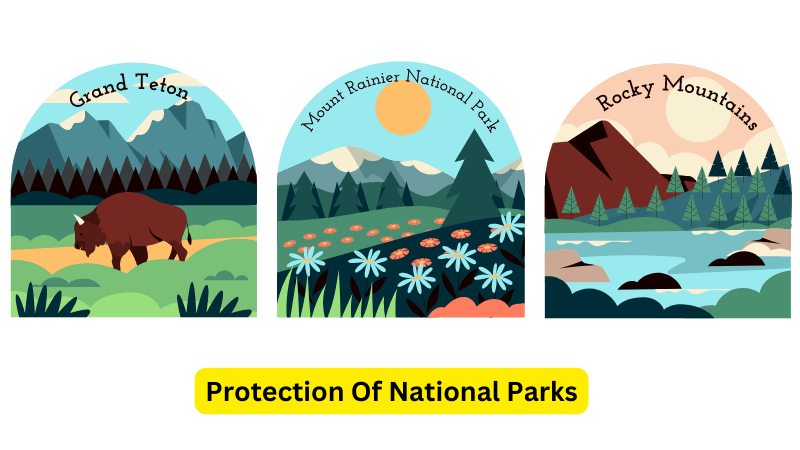
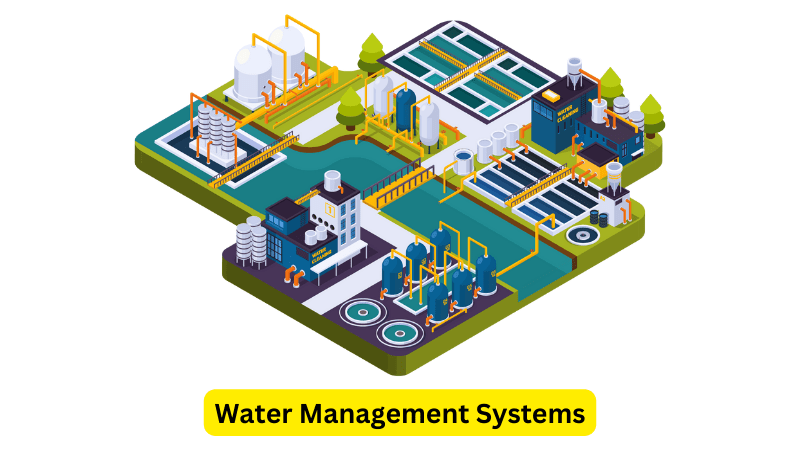









super duper awesome
Pingback: How Do Humans Interact With The Environment Positively? The 16 New Answer - Chiangmaiplaces.net
very good
Thank you very much for your valuable comment!
Do you know how much plastic is dumped in the Pacific Ocean
1 trillion tons of garbage ️